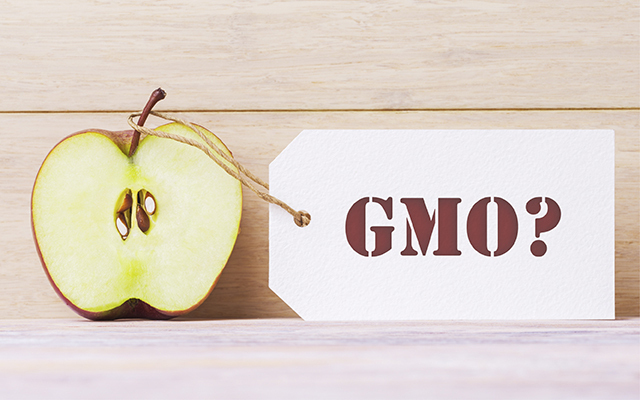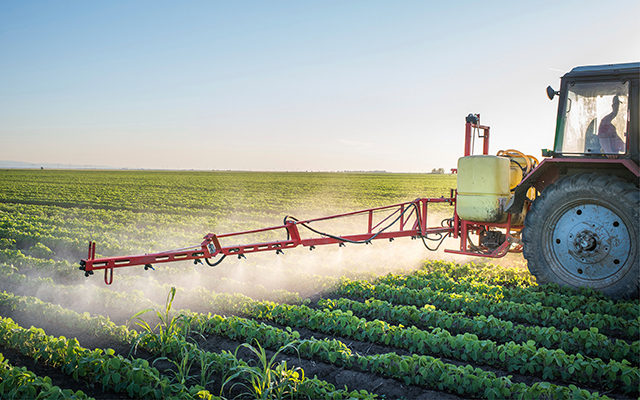The next generation of GMO foods is coming soon to a grocery store near you — and you may never even know you’re eating them.
The first GMOs were typically made from transgenic plants: Genes from one species were added to another, often to create disease- or pest-resistant crops, or plants immune to herbicides such as the glyphosate in Roundup. (For more on concerns about glyphosate residue in foods, see ELmag.com/glyphosateFDA.)
New-gen GMOs are created by editing genes or even introducing completely new DNA sequences using the computer software CRISPR. This has led to these GMO 2.0 foods being called “synbio” for synthetic biology, as the results are entirely new forms of life. Among GMO 2.0 foods:
- Arctic apples are genetically modified to never brown. They are now being sold presliced in bags as snack food.
- AquAdvantage salmon is the result of the Atlantic salmon’s genome modified with a gene from large-sized Chinook (or king) salmon plus a “promoter” gene from the ocean pout. The outcome is a fast-growing mega-salmon.
- Soon to come: The Calyxt company is developing wheat with reduced gluten, soybeans that create no trans fats when cooked into oil, and potatoes that develop lower levels of the probable human carcinogen acrylamide when fried, making for healthier potato chips and French fries.
But just as with the first GMOs, some experts are concerned about the lack of oversight or testing of these next-gent GMOs.
“Genetic engineering and gene-editing technologies are quite unpredictable and are prone to unexpected side effects,” says Dana Perls, senior food and technology campaigner for Friends of the Earth, an environmental watchdog group.
“So far, no safety assessments specific to these new techniques are required, and no regulatory oversight is in place for this swiftly moving set of new technologies. Some companies are taking advantage of the large holes in federal regulations and are rushing new gene-edited products to market, with very little if any understanding about negative impacts on our health or the environment, and without even telling consumers.”
Some of these GMO 2.0 foods can be legally marketed as “non-GMO” or “natural” because USDA regulations haven’t yet caught up with the new biotech. Cibus canola oil is an example: It’s genetically edited to be resistant to herbicides, skirting USDA regulations.
But consumer concerns about GMO foods have prompted fast-food chains such as McDonald’s and Wendy’s to turn down the Arctic apple. McDonald’s has also declined to use three new potato varieties in its French Fries that are gene-engineered to resist the pathogen that caused the Irish potato famine. And more than 60 grocery chains, including Walmart, have committed not to carry the AquAdvantage salmon.
“The market is picking up the regulatory slack, and consumers are depending on labels like the ‘Non-GMO Project Verified’ and ‘Organic’ certification to avoid genetically engineered ingredients,” Perls explains. “The USDA’s regulations on genetic engineering are dangerously antiquated, and given the current political climate, it does not look like that is going to change anytime soon. Consumers have to take matters into their own hands to avoid GMOs and new gene-edited products, and they do that by purchasing certified Organic and Non-GMO Project Verified products.
“We should all have the right to know what is in our food or other products. Biotech companies are unleashing technologies with few ideas about consequences. People want food that is truly authentic, natural, healthy, and the least risky. We need transparency and the right to choose.”




This Post Has 0 Comments